Charleston Currents #12.41 | Aug. 31, 2020
SUNSET. Here’s a familiar Lowcountry marsh scene just moments before sunset. Summer days are getting shorter, little by little, and before long, there will be a hint of fall in the morning air. Photo by Bre Smith on Unsplash.
TODAY’S FOCUS: Governor should create new state health testing office
COMMENTARY, Brack: Sanford is on target about debt, deficit
IN THE SPOTLIGHT: Magnolia Plantation and Gardens
NEWS BRIEFS: More coronavirus testing needs to be done, officials say
FEEDBACK: Send us your thoughts
MYSTERY PHOTO: Dock scene you may recognize
CALENDAR: Lowcountry Listens back for round 3 of virtual music
NEW BOOK: Ever wonder where the Atlantic Ocean started?
Governor should create new state health testing office
By Fred Palm, contributing editor for the common good | In the bizarro world of 2020, South Carolina legislators of both parties are not only demanding that a state agency ask for more money, but telling its leaders outright they will get whatever they need.
 It should be obvious by now — even to us dullards casually watching the paint dry with the absence of our no-show legislature — that for seven long months, our governor, Henry McMaster, does not want a big effective testing program to contain COVID-19. The S.C. McMaster program is no testing and no masking.
It should be obvious by now — even to us dullards casually watching the paint dry with the absence of our no-show legislature — that for seven long months, our governor, Henry McMaster, does not want a big effective testing program to contain COVID-19. The S.C. McMaster program is no testing and no masking.
McMaster lacks the modicum of a plan to contain the COVID-19 infections, illnesses and deaths. There is no victory; just enduring the pain and dislocations. Nada. Nope. Just Southern plantation slow talk without substance.
McMaster likes coasting and bumping along, as if this is a flood. McMaster dons his black emergency-in-charge shirt standing ready to send in helpful stuff as the waters recede. Governor: This is a pandemic. The storm emergency model does not work in this virus emergency.
Sadly, a fulsome COVID-19 testing program to contain the virus might subject him to a Twitter storm from his political patron. He would rather lay low. Off radar. No cojones. Seemingly, McMaster has greater loyalty genuflecting to his patron than he does the people of South Carolina. That is clear.
New office needed
Our legislators need to create the Office of COVID-19 Testing (OC-19T) within the state Department of Health and Environmental Control (DHEC). Establish a separate testing oversight board with a single unequivocal mission: Contain COVID-19.
Establish a leadership board with a majority made up of epidemiologists, infection disease physicians, biomedical statisticians and representatives of the people of South Carolina. (Those serving our state to address COVID-19 cannot also serve on the failed DHEC board.) Duties of the new office:
- OC-19T is to prepare and implement statewide, regional and community COVID-19 testing of a magnitude to reliably estimate the state and regional prevalence of COVID-19.
- Provide to the people of our state rapid COVID-19 diagnostic testing with the test results produced within 48 hours.
- Protect school children/students and staff with COVID-19 testing support.
- Establish diagnostic testing to identify and serve South Carolinians without symptoms infected with COVID-19 who are capable of transmitting the disease.
Initially direct 33.3 percent of federal CARES funding should be the budget of the OC-19T to implement statewide testing to contain COVID-19
Contain COVID-19!
- OC-19T should also hire and train personnel to implement statewide contract tracing. All testing results are to be provided to DHEC for review, comment and the required statistical reporting.
- The OC-19T budget for testing and tracing is to be submitted directly to the legislature for its review and approval.
- Funds not encumbered for testing are released to the executive for planning and programs approved by the legislature.
- Duplicative functions between DHEC and OC-19T are transferred to OC-19T.
- OC-19T will sunset six months after the last recorded case of COVID-19.
- During the infection period, the OC-19T may order successive masking periods of 30 days to reduce COVID-19 spread in localities with greater than 10 percent positivity.
Legislators: Like the questions and issues surrounding race in our state, the COVID-19 manifestations are not going away no matter how hard they look away and claim it is not seen. Given the hapless McMaster COVID-19 response these past seven months, the legislature must:
- Grab the leadership horns;
- Assert hegemony over the COVID-19 response program by providing the needed scope of policy responses; and
- Install the needed leadership at DHEC to contain the pandemic impacting S.C.’s economy and people.
Address, confront and get on with what needs doing. Get our economy and people safely back into action. This has gone on far too long.
Governor: Get off your duff and serve the people of South Carolina.
Fred Palm of Edisto Island is a retired professor of oversight and investigations at the John Jay College School of Public Management and a former executive director of the Association of Inspectors General. He writes about the Common Good.
Sanford is on target about debt, deficit
By Andy Brack, editor and publisher | Mark Sanford is onto something: If the United States doesn’t get control of the exploding national debt and deficit, the country will fade away.
 As of Friday, the national debt was $26.6 trillion dollars. That’s 266 followed by 11 zeros.
As of Friday, the national debt was $26.6 trillion dollars. That’s 266 followed by 11 zeros.
This number is mind-numbing. Every second, the national debt goes up by $270,000. The total debt equates to more than $80,000 per person in a country where the federal government collects 10 times less per citizen per year, according to the USDebtClock.org.
The national deficit — what we’re adding to the debt every year — has exploded to $2.9 trillion per year.
This amount of borrowing to spend trillions more than the nation collected in taxes is a familiar theme for Sanford, the state’s former penny-pinching Republican governor and congressman. He has been railing against profligate spending since he rocketed onto the political scene in the U.S. House’s Gingrich revolution of 1994.
“Our present financial course is unsustainable,” Sanford said in a statement announcing his new nonprofit, Americans for Debt and Deficit Reduction. “Never have we seen this level of debt in peacetime and it will have grave consequences for each one of us if left unchecked.
“History shows that soaring national debt, deficits and government spending are hardly a recipe for national prosperity, and more people need to be informed on this.”
The statement noted “America’s debt levels, when measured against the size of our economy, will soon amass levels not seen since World War II and the Great Depression. The current coronavirus pandemic amplifies these trends, and this makes it that much more important that people have a firm understanding of the impact of governmental debt, deficits and spending.”
Sanford is right. He may not be the perfect messenger, as evidenced by how social media criticized a media appearance in which his background looked like a wrinkled white sheet. Or his infamous Appalachian Trail excuse when he was really having an affair.
But he’s right. We’ve got to get this thing under control. It’s eating away at the country’s power and competitiveness. It is, as some say, a clear and present danger to our future security. If Democrats and Republicans don’t stop spending so much, there won’t be much left for much more than paying interest on what we’ve been borrowing. Profligate spending will drown the government to the point that services will dwindle and our infrastructure will rot. Our children and grandchildren’s America will be hardly recognizable compared to what adults have had in recent years.
Sanford isn’t the only South Carolinian who has raised Cain about the soaring deficit and debt. The late U.S. Sen. Fritz Hollings chaired the Senate Budget Committee in the early 1980s when the national debt went over $1 trillion for the first time. By 1993 when I worked for him, the national debt had grown to $4.4 trillion. It made Hollings apoplectic. Two years later when Sanford was in his first term, the debt was $5 trillion. It’s more than quadrupled since then.
Sanford’s slog to get people to wake up to the perils of too much borrowing and fiscal irresponsibility is compelling because it has huge political potential to do something that Washington can’t seem to do — unite. Curbing deficit spending and reining in the debt are issues that can bring politicians together, regardless of party. It’s what America needs now. Yes, we can solve some of our social issues. But we won’t have the capacity for more fixes if we don’t get our fiscal house in order.
“To his credit, Sanford has been willing to raise the national debt as a serious problem, while both Republicans and Democrats have kicked the can down the road,’ said Greenville political strategist Chip Felkel, who has long ties to the Republican Party. “This group can have an impact, gain support from both sides of the aisle, certainly outside of D.C. and in D.C., too, if the solutions they offer are executable and aren’t perceived as draconian.
“While that might be the approach needed, it won’t pick up steam if you try to fix this all at once. Sanford’s on to something. Let’s hope people listen.”
Indeed.
Andy Brack is editor and publisher of Charleston Currents. Have a comment? Have a comment? Send to: editor@charlestoncurrents.com.
Magnolia Plantation and Gardens
 The public spiritedness of our underwriters allows us to bring Charleston Currents to you at no cost. Today we shine our spotlight on Magnolia Plantation and Gardens, founded in 1676 by the Drayton family.It has survived the centuries and witnessed the history of our nation unfold before it from the American Revolution through the Civil War and beyond. It is the oldest public tourist site in the Lowcountry and the oldest public gardens in America, opening its doors to visitors in 1870. Open 365 days a year, Magnolia offers its visitors splendid tours of nature and history and the role African-Americans played in the development of its award-winning Romantic-style gardens.
The public spiritedness of our underwriters allows us to bring Charleston Currents to you at no cost. Today we shine our spotlight on Magnolia Plantation and Gardens, founded in 1676 by the Drayton family.It has survived the centuries and witnessed the history of our nation unfold before it from the American Revolution through the Civil War and beyond. It is the oldest public tourist site in the Lowcountry and the oldest public gardens in America, opening its doors to visitors in 1870. Open 365 days a year, Magnolia offers its visitors splendid tours of nature and history and the role African-Americans played in the development of its award-winning Romantic-style gardens.
- Visit www.magnoliaplantation.com to learn how you can experience a complete plantation experience.
- Click here to learn about events and what’s new.
- To meet all of our underwriters, click here.
More coronavirus testing needs to be done, officials say
Staff reports | State officials say coronavirus testing has declined in the last month while, at the same time, new cases have fallen. But that doesn’t necessarily mean the state is recovering quickly from COVID-19, particularly since hospitalizations due to the virus are on the rise since Aug. 24.
One state official said the decline in new cases might be due to fewer tests being done.
“It’s possible that less cases have been identified due a recent decrease in overall testing,” according to statements by Dr. Brannon Traxler, a S.C. Department of Health and Environmental Control (DHEC) physician. “We need to have more people getting tested regularly in order to stop this disease,” Traxler said, describing testing as “absolutely essential.”
“It helps us identify people who are infected with the virus,” she said. “And testing is important for identifying individuals who have the virus but are asymptomatic and are spreading the virus unknowingly.” Read the full story in sister publication, Statehouse Report.
In other recent news:
![]() That BIG Book Sale rescheduled. The Charleston Friends of the Library’s annual biggest used book sale has been rescheduled from October until May 27 to May 30 due to the coronavirus. In the interim will be four pop-up book sales: Sept. 12 at Baxter Patrick James Island Library; Oct. 10 at Wando Mount Pleasant Library; Nov. 14 at Bees Ferry West Ashley Library; and Dec. 12 at Mount Pleasant Regional Library. More info.
That BIG Book Sale rescheduled. The Charleston Friends of the Library’s annual biggest used book sale has been rescheduled from October until May 27 to May 30 due to the coronavirus. In the interim will be four pop-up book sales: Sept. 12 at Baxter Patrick James Island Library; Oct. 10 at Wando Mount Pleasant Library; Nov. 14 at Bees Ferry West Ashley Library; and Dec. 12 at Mount Pleasant Regional Library. More info.
Senate convenes this week. The Senate will convene as a full body noon Sept. 2 in its chamber at the Statehouse in Columbia. Senate President Harvey Peeler said the body would discuss making voting safe for the Nov. 3 general election. The House will convene on Sept. 15.
Budget stuff remains unclear, but still some surplus. The revenue forecasters for state spending met Aug. 24 to close the books on the fiscal year of 2019-2020, which ended June 30, but had revenues delayed as tax deadlines were extended amid the pandemic. The year ended with about $467 million above the $9.4 billion originally predicted for revenues, according to Revenue and Fiscal Affairs Executive Director Frank Rainwater. (For context, in January, Rainwater’s team was predicting a $507 million surplus, on top of unexpectedly recurring surplus revenues from the previous year of $350 million.) However in an interview Thursday, the state’s Comptroller General Richard Eckstrom said the year closed at a $775 million budget surplus. That includes money that agencies didn’t spend and that’s why it doesn’t match with the figures reported Monday, Rainwater said.
Now comes the tricky part for the Board of Economic Advisors: Predicting what revenues the state should expect for the 2020-2021 fiscal year. It will convene again 1 p.m. Aug. 31 to discuss predictions. Many expect advisors to be conservative in their estimates.
Statehouse Report’s Lindsay Street contributed to this section. Have a comment? Send to: editor@charlestoncurrents.com
Got something to say? Let us know by mail or email
We’d love to get your impact in one or more ways:
Send us a letter: We love hearing from readers. Comments are limited to 250 words or less. Please include your name and contact information. Send your letters to: editor@charlestoncurrents.com. | Read our feedback policy.
Tell us what you love about the Lowcountry. Send a short comment – 100 words to 150 words – that describes something you really enjoy about the Lowcountry. It can be big or small. It can be a place, a thing or something you see. It might be the bakery where you get a morning croissant or a business or government entity doing a good job. We’ll highlight your entry in a coming issue of Charleston Currents. We look forward to hearing from you.
Dock scene you may recognize
Have you seen this dock scene before? It’s somewhere in Charleston County, but where? Send to editor@charlestoncurrents.com. And don’t forget to include your name and the town in which you live.
Our previous Mystery Photo
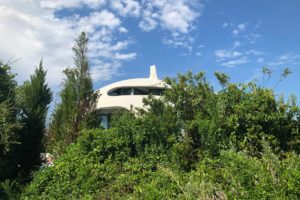 Our Aug. 24 photo, “Unusual building,” shows a dome house built on the northern end of Sullivan’s Island to withstand hurricanes. Congratulations to those who identified it: Boykin Beard of Camden; Chris Brooks, David Lupo and Mary Kaplan, all of Mount Pleasant; Jay Altman of Columbia; Marnie Huger of Richmond, Va.; George Graf of Palmyra, Va.; Daniel Walters of Moncks Corner; Allan Peel of San Antonio, Texas; Pat Deussing of Apex, N.C.; Joe Mendelsohn and Delia A. Smith, both of Charleston; Charlie Morrison, now of Mashpee, Mass; Carol Ann Smalley of James island; and Karen Buerkle.
Our Aug. 24 photo, “Unusual building,” shows a dome house built on the northern end of Sullivan’s Island to withstand hurricanes. Congratulations to those who identified it: Boykin Beard of Camden; Chris Brooks, David Lupo and Mary Kaplan, all of Mount Pleasant; Jay Altman of Columbia; Marnie Huger of Richmond, Va.; George Graf of Palmyra, Va.; Daniel Walters of Moncks Corner; Allan Peel of San Antonio, Texas; Pat Deussing of Apex, N.C.; Joe Mendelsohn and Delia A. Smith, both of Charleston; Charlie Morrison, now of Mashpee, Mass; Carol Ann Smalley of James island; and Karen Buerkle.
Lupo said the house is known as “Eye of the Storm” for being “constructed after Hurricane Hugo destroyed the previous house on the lot in 1989. The owners’ son happened to be in the business of constructing concrete buildings, and he along with a local architect came up with the oval dome design, which they hoped would survive the next storm to come along.”
- Send us a mystery: If you have a photo that you believe will stump readers, send it along (but make sure to tell us what it is because it may stump us too!) Send it along to editor@charlestoncurrents.com.
Lowcountry Listens back for round 3 of virtual music
Staff reports | The Gaillard Center will offer its third round of free music performances with the continuation of Lowcountry Listens starting Sept. 2. The virtual music series will air online on consecutive Wednesdays at 6 p.m. for five more weeks. Performers include:
Little Bird | Sept. 2: This indieR&B/Soul outfit reflects the sonic alchemy of a broad range of musical influences, such as legendary artists, D’Angelo, and Erykah Badu, along with revered modern acts, Hiatus Kaiyote, Fat Freddy’s Drop, and Nick Hakim. The group, originally from Maryland, was voted in 2018 as the Charleston City Paper’s “R&B/Soul Band of the Year.”
The High Divers | Sept. 9: Formed in 2014, the band hit the ground running playing shows regionally around South Carolina, recording its debut album, “Riverlust”, and building a fan base that quickly fell in love with their raucous live shows. Perhaps the band’s most well known work was 2019’s “Ride With You” EP produced by Jason Isbell guitarist, Sadler Vaden, who is credited with “Getting the band out of it’s comfort zone, and into some close to the vest songwriting”, according to bassist and singer, Kevin Early
Nathan & Eva | Sept. 16: This local sibling duo got its start performing covers online to their thriving YouTube fanbase before jumping into live performing in the Charleston area in 2016. Since then, it released a self-titled EP in 2018 and is currently finishing a first full-length album.
Sideshow Americans | Sept. 23: This four-piece Americana Rock ’n Roll band from Johns Island has a sound and spirit that remains squarely where it began – in the raucous, late-night joy of picking up the closest instrument to you and singing songs with your friends.
Charlton Singleton and Contemporary Flow | Sept. 30: A native of Awendaw, Singleton began his musical studies at 3 on the piano. He would then go on to study the organ, violin, cello, and the trumpet throughout elementary, middle and high school. In 1994, he received a Bachelor of Arts in Music Performance from South Carolina State University. As a performer, Singleton leads his own ensembles that vary in size and style. He is a founding member of the Grammy Award-winning group Ranky Tanky.
The first four performances are presented in part by First National Bank. The final performance is sponsored by Tito’s Handmade Vodka.
Also on the calendar:
![]() Safe Sounds concerts are back: Saturdays through Oct. 31, Firefly Distillery, North Charleston. The distillery’s socially-distanced concerts are back starting Sept. 5 with its fall Safe Sounds series. The first concert will feature On the Border, a tribute to the Eagles and Haley Mae Campbell.There also will be a special performance on Oct. 2 from the Grammy Award-winning Del McCoury Band. Tickets can be purchased in advance at citypapertickets.com.
Safe Sounds concerts are back: Saturdays through Oct. 31, Firefly Distillery, North Charleston. The distillery’s socially-distanced concerts are back starting Sept. 5 with its fall Safe Sounds series. The first concert will feature On the Border, a tribute to the Eagles and Haley Mae Campbell.There also will be a special performance on Oct. 2 from the Grammy Award-winning Del McCoury Band. Tickets can be purchased in advance at citypapertickets.com.
Dog Day Afternoon: 10 a.m. to noon; and 1 p.m. to 3 p.m., Sept. 13, Whirlin’ Waters Adventure Waterpark, North Charleston. Space is limited in each of the two sessions for this fun day in which dogs can cool off at the waterpark at the end of summer. $12 per dog. Pre-registration required.
Vintage market: Noon to 3 p.m., Sept. 13, via Instagram. Holy City Vintage Market will hold a virtual event to allow shoppers to view hundreds of items for purchase over three hours. How it works: Watch HCVM’s Instagram story as we repost items for sale from 20 local vintage, secondhand, and artisan vendors. Shoppers can DM individual shops to arrange purchase and no-contact shipping, drop-off, or pickup details. More.
“Connections” on display: Through Oct. 24, Redux Contemporary Art Center, Charleston. The exhibition of works by Gret Macintosh features looks at physical connections between places, such as waterways, roads, and bridges that the artist has experienced over the last 15 years of living in the Charleston area. The exhibition is open 11 a.m. to 4 p.m., Mondays and Wednesdays; 11 a.m. to 3 p.m. Fridays; and by appointment. More.
From Etchings to Pastels: Through Nov. 29, Lowcountry Image Gallery, The Charleston Museum. The museum has partnered with the Pastel Society of South Carolina to present new interpretations of etchings stemming from the Charleston Renaissance Movement about 100 years ago. Learn more.
Online offerings:
- Gibbes Museum. You can enjoy lots of local art offerings through the website and social media accounts of the Gibbes Museum. At 10 a.m. on weekdays, the museum posts virtual readings and workshops on Facebook. Find more online.
- Avian Conservation Center. Access videos and live streaming presentations online to learn about what’s going on at the Center for Birds of Prey.
- Around the world. You can visit 500 museums across the world online through this Google amalgamation of sites.
If you have any online events, drop us a line (editor@charlestoncurrents.com) and make sure to put “Online event” in the subject line. Similarly, if you’ve got cool ideas for stuff to do while in isolation at home, send them our way.
NEW BOOK: 350 FACTS ABOUT CHARLESTON
Ever wonder where the Atlantic Ocean started?
Staff reports | Here is a preview of four more factual snippets from the new book, 350 Facts About Charleston:
Start of the Atlantic Ocean
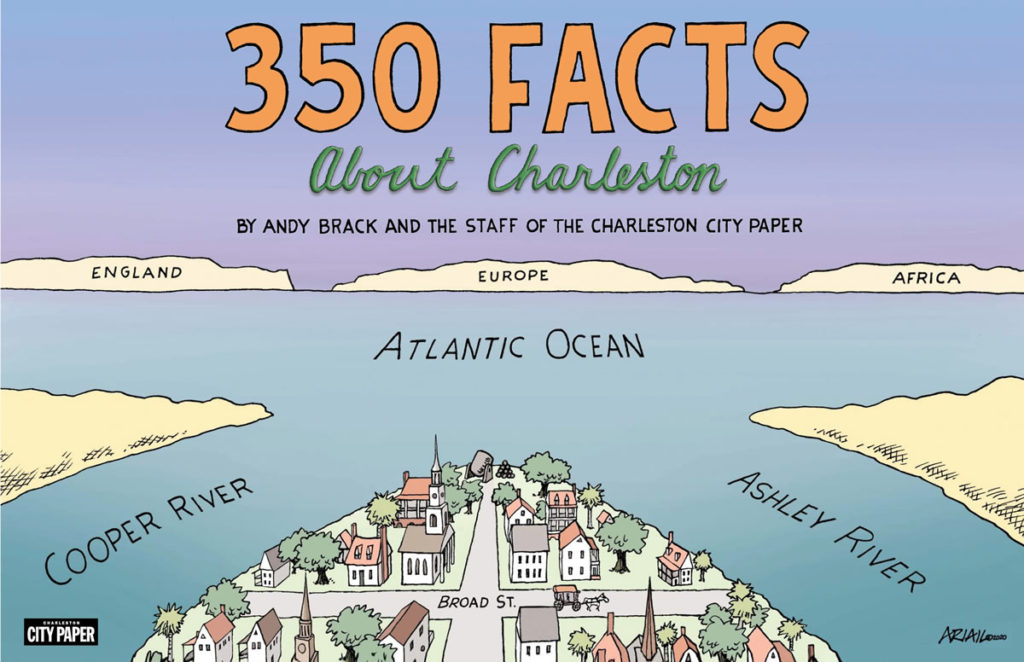 According to old-time wags and natives who see Charleston as the epicenter of the world, the Atlantic Ocean actually starts in Charleston harbor at the confluence of the Ashley and Cooper rivers. (See Robert Ariail’s cartoon at right that’s the cover of the book.) The late U.S. Sen. Fritz Hollings, born in the Holy City in 1922, often was heard saying, “Every great city has a great river. London has the Thames. New York has the Hudson. Washington has the Potomac. And Charleston, Andrew, Charleston has two great rivers — the Ashley and the Cooper — and that’s where the Atlantic Ocean starts.”
According to old-time wags and natives who see Charleston as the epicenter of the world, the Atlantic Ocean actually starts in Charleston harbor at the confluence of the Ashley and Cooper rivers. (See Robert Ariail’s cartoon at right that’s the cover of the book.) The late U.S. Sen. Fritz Hollings, born in the Holy City in 1922, often was heard saying, “Every great city has a great river. London has the Thames. New York has the Hudson. Washington has the Potomac. And Charleston, Andrew, Charleston has two great rivers — the Ashley and the Cooper — and that’s where the Atlantic Ocean starts.”
The state was occupied by natives for millennia before colonization
At least 29 distinct tribes of Native Americans lived in the borders of modern-day South Carolina before the arrival of European settlers. The names of many tribes are still with us today in places like the Stono and Ashepoo rivers, Kiawah Island and Edisto Island. The native population sharply declined after the arrival of the Europeans, who brought diseases such as smallpox and conflicts over trade practices and land. Many tribes are now extinct; a few tribes, though, still exist and are active today, including the Catawba, Pee Dee and Santee tribes. Many tribes made their homes around what would become Charleston, such as the Edisto, Kiawah, Stono and Etiwan tribes.
Getting here in olden days was a nightmare for travelers
The ships that made the voyage to the Carolinas in 1669 were met with rough waters and even rougher weather. Damaged in the first trip to Barbados, ships were scattered by storms during the next outing, during which one shipwrecked and another disappeared in a hurricane. It wasn’t until the following year that the expedition’s surviving ship, the Carolina, dropped anchor at the mouth of the Ashley River, with the only known date of arrival to be “early in April,” 1670.
Carolina was a “colony of a colony”
Charleston and Barbados have a strong connection. In 1670, the Lords Proprietors invited Englishmen who had spent up to four decades successfully settling on the Caribbean island to be part of the expedition to start the Carolina colony. Settlers in the Carolinas imported the “Barbados Model” of governance, which included forced labor by indentured servants and enslaved Africans. “Carolina thus became what one historian called a ‘colony of a colony’ — a colony of Barbados,” according to Rhoda Green, honorary consul for Barbados in South Carolina. Other similarities between the two are found in similar surnames, such as Drayton, Middleton and Gibbes, and similar architecture, such as how the Charleston single house may be adapted from a type of dwelling in Barbados.
350 Facts About Charleston, a new book of historical facts commemorating the 350th anniversary of the city of Charleston, will be available in print in mid-September. Published by the staff of sister publication, Charleston City Paper, you can pre-order a copy today.
As more people stay home to deal with the coronavirus crisis, people are looking for things to do. You can find some fun things to do online in our calendar section below, but let us also encourage you to FORWARD your issue of Charleston Currents to your friends and encourage them to subscribe. It’s got a great price, as you know: Free! We hope they’ll enjoy our coverage.
- DONATE. Now also would be a great time to contribute as we deal with the crisis. In advance, thank you.
OUR UNDERWRITERS
Charleston Currents is an underwriter-supported weekly online journal of good news about the Charleston area and Lowcountry of South Carolina.
- Meet our underwriters
- To learn more about how your organization or business can benefit, click here to contact us. Or give us a holler on the phone at: 843.670.3996.
OUR TEAM
Charleston Currents offers insightful community comment and good news on events each week. It cuts through the information clutter to offer the best of what’s happening locally.
- Mailing address: 1316 Rutledge Avenue | Charleston, SC 29403
- Phone: 843.670.3996
Charleston Currents is provided to you weekly by:
- Editor and publisher: Andy Brack, 843.670.3996
- Contributing editor, common good, Fred Palm
- Contributing editor, money: Kyra Morris
- Contributing editor, Palmetto Poem: Marjory Wentworth
- Contributing editor, real estate: Digit Matheny
- Contributing photographer: Rob Byko
- Charleston Currents also uses content from the outstanding staff at the Charleston City Paper, a sister publication.
SUBSCRIBE FOR FREE
Subscriptions to Charleston Currents are free.
- Click here to subscribe.
- Unsubscribe. We don’t want to lose you as a reader of Charleston Currents, but if you must unsubscribe, you will have to do it through the email edition you receive. Just go to the bottom of any of your weekly newsletters and click the “unsubscribe” function. If that doesn’t work, please send us an email with the word “unsubscribe” in the subject line.
- © 2008-2020, City Paper Publishing, LLC. All rights reserved. Charleston Currents is published every Monday by City Paper Publishing LLC, 1316 Rutledge Ave., Charleston, SC 29403.


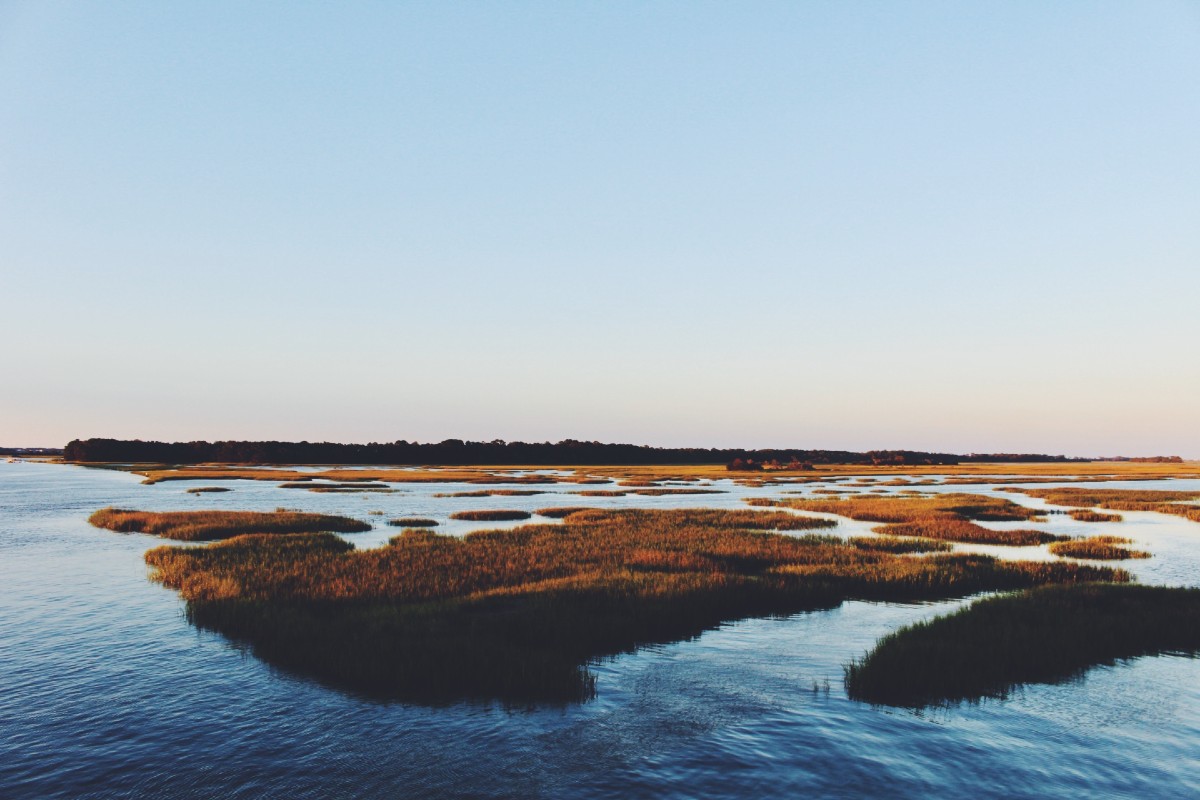



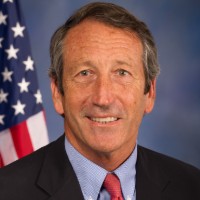
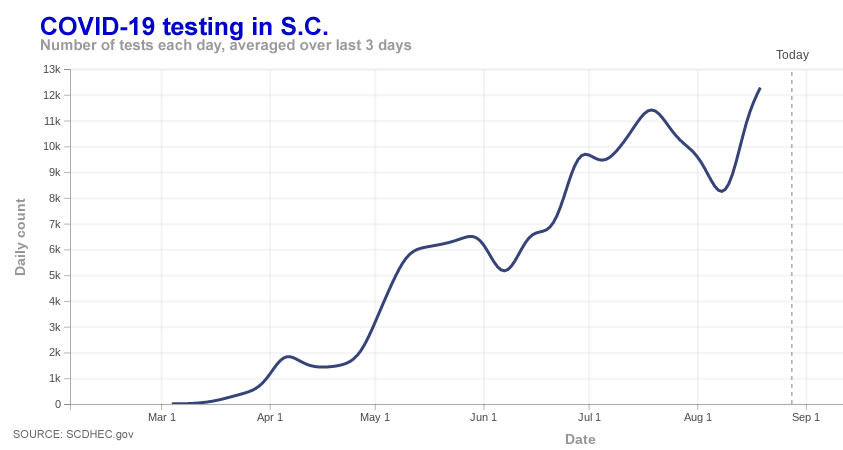
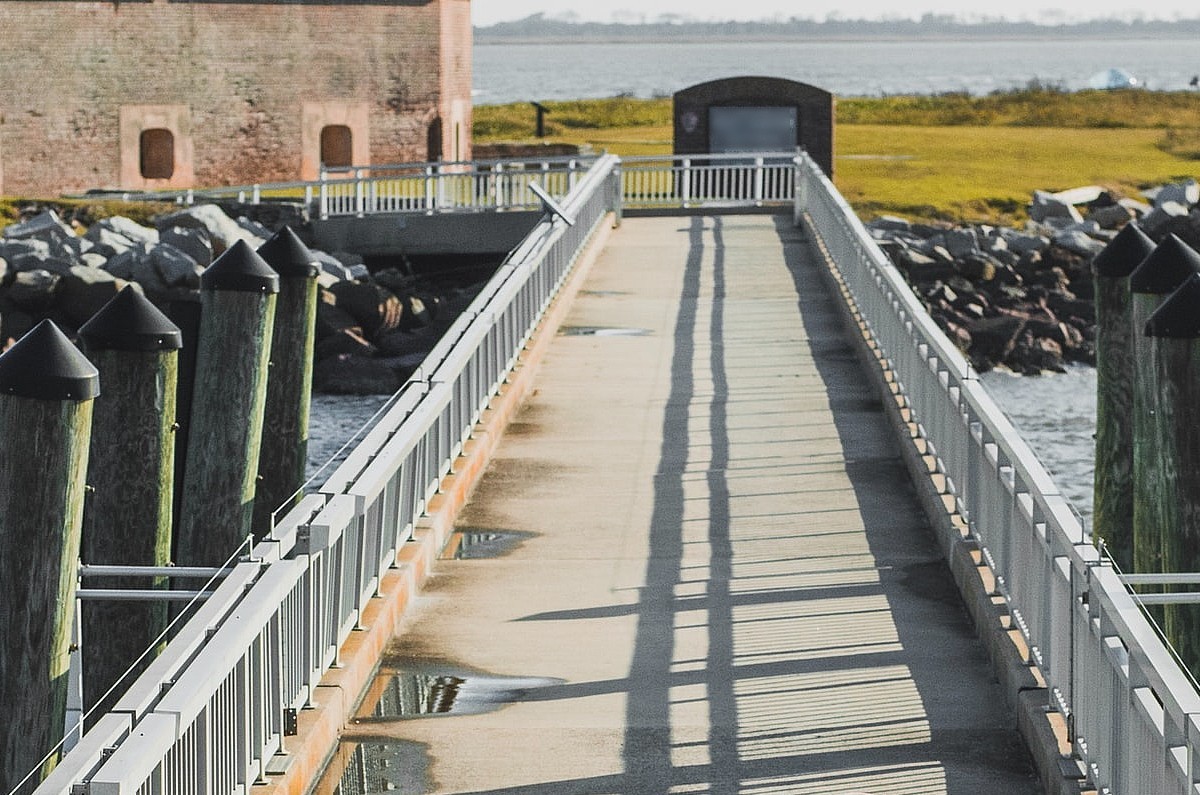


 We Can Do Better, South Carolina!
We Can Do Better, South Carolina!
























